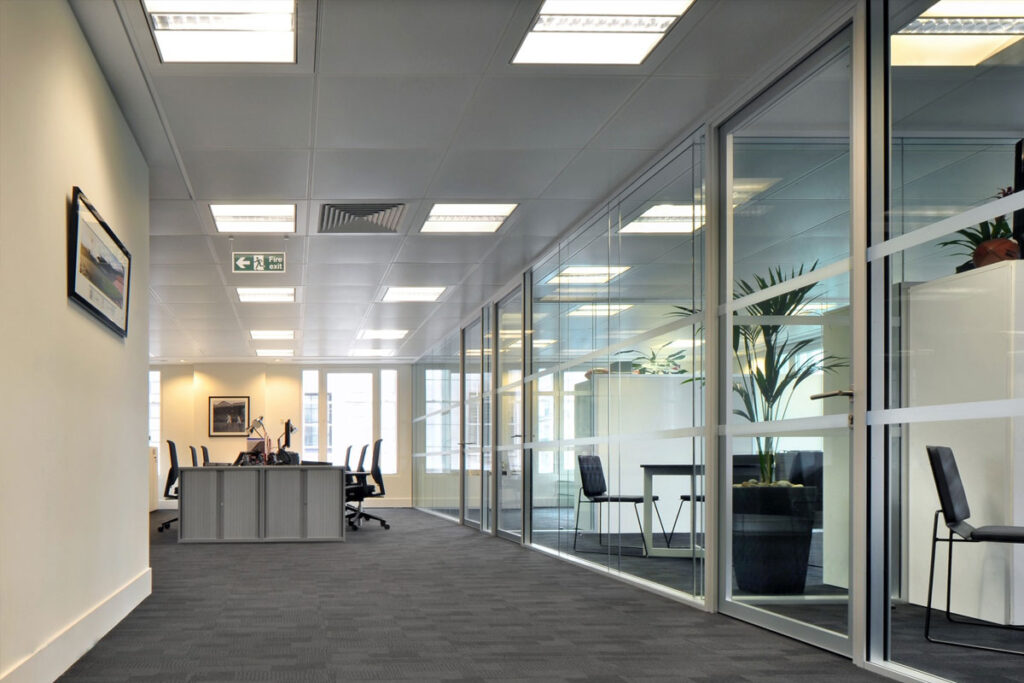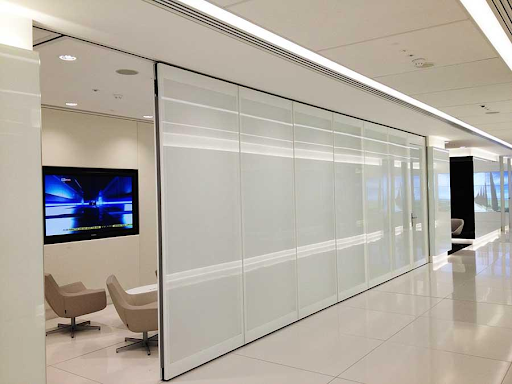As modern interior design increasingly embraces open-concept spaces, the use of glass partition walls has surged in popularity. These transparent barriers offer an elegant way to divide spaces without sacrificing natural light or the sense of openness. However, with this trend comes a significant challenge: noise control. Glass, by its nature, does not provide substantial sound insulation, leading to potential disruptions in environments where privacy and quiet are essential. This article delves into the various acoustic solutions available to enhance the soundproofing of glass partition walls, ensuring that interior spaces remain both beautiful and functional.
Understanding the Need for Acoustic Solutions in Glass Partition Walls

Why Glass Partitions Need Soundproofing
Glass partitions, while visually appealing, are not naturally adept at blocking sound. Sound waves travel easily through glass, making it an ineffective barrier against noise. This issue becomes particularly problematic in office settings, where privacy and concentration are paramount, or in residential spaces where peace and quiet are highly valued. Without proper soundproofing, glass partitions can undermine the comfort and functionality of a space.
Benefits of Effective Acoustic Solutions
Implementing effective acoustic solutions for glass partitions offers several key benefits:
- Enhanced Privacy: Soundproofing prevents conversations from being overheard, protecting confidential information in workplaces and ensuring personal conversations remain private in homes.
- Improved Productivity in Offices: A quieter environment reduces distractions, leading to higher focus and productivity among employees.
- Better Comfort in Living Spaces: Acoustic solutions create a serene atmosphere, enhancing the comfort and well-being of occupants.
Types of Acoustic Solutions for Glass Partition Walls
Acoustic Glass Panels
One of the most effective soundproofing methods for glass partitions is the use of acoustic glass panels. These panels are typically made from laminated glass, which consists of two or more layers of glass with an interlayer of acoustic material. This construction significantly reduces the transmission of sound waves, making it ideal for environments where noise control is a priority.
| Acoustic Glass Panels | Benefits |
|---|---|
| Laminated Glass | Reduces sound transmission, enhances privacy, maintains transparency |
| Interlayer Materials | Improves acoustic insulation, offers better durability and safety |
Acoustic Seals and Gaskets
Acoustic seals and gaskets are another vital component in soundproofing glass partition walls. These seals are typically made from magnetic or silicone materials that create a tight fit around the edges of the glass panels, preventing sound from leaking through gaps. They are particularly effective in doors and windows within glass partitions.
- Magnetic Seals: Offer a strong closure, ensuring minimal sound leakage.
- Silicone Seals: Provide flexibility and durability, maintaining their effectiveness over time.
Double-Glazing Techniques
Double-glazing is a popular technique for enhancing the acoustic performance of glass partitions. This method involves using two panes of glass separated by an air or gas-filled cavity. The gap between the panes acts as a buffer, reducing the transmission of sound. The effectiveness of double-glazing can be further enhanced by using acoustic glass for the panes.
| Double-Glazing Techniques | Benefits |
|---|---|
| Air-Filled Cavity | Reduces sound transmission by creating a buffer zone |
| Gas-Filled Cavity | Further enhances acoustic insulation, reduces heat transfer |
Acoustic Blinds and Curtains
For those looking to add an extra layer of soundproofing, acoustic blinds and curtains can be a stylish and functional option. These fabric treatments are designed to absorb sound, reducing echo and noise levels in a room. They can be particularly useful in spaces where complete transparency of glass partitions is not necessary at all times.
- Acoustic Blinds: Can be adjusted for light and sound control, offering flexibility.
- Acoustic Curtains: Provide a soft, aesthetic option for sound absorption, available in various designs and colors.
Sound-Absorbing Wall Panels
In addition to treating the glass partitions themselves, sound-absorbing wall panels can be installed in adjacent areas to enhance overall acoustic performance. These panels are available in various materials, such as foam, fabric, and wood, and can be customized to complement the design of the space. By absorbing sound, they reduce the amount of noise that reaches the glass partitions.
- Aesthetic Considerations: Panels can be designed to blend seamlessly with the interior decor.
- Functional Benefits: Improve overall sound quality and reduce noise levels in the room.
Choosing the Right Soundproofing Solution for Your Space

Factors to Consider
When selecting a soundproofing solution for glass partition walls, several factors should be considered:
- Level of Noise Reduction Required: Different spaces have varying needs for soundproofing. Consider the specific acoustic requirements of your environment.
- Budget Constraints: Some solutions, like double-glazing, may be more expensive but offer superior sound insulation. Evaluate your budget and prioritize based on your needs.
- Design and Aesthetic Preferences: Soundproofing solutions should not compromise the visual appeal of the space. Choose options that complement your interior design.
Installation and Maintenance Tips for Acoustic Glass Partition Walls
Best Practices for Installation
Proper installation is crucial to the effectiveness of acoustic solutions. Professional installation ensures that all components, such as seals and gaskets, are correctly fitted, minimizing gaps where sound could leak through. Additionally, working with experienced installers can help overcome common challenges, such as aligning double-glazed panels.
Maintenance for Long-Term Acoustic Performance
To maintain the soundproofing efficiency of your glass partition walls, regular maintenance is essential. This includes checking the integrity of seals and gaskets and ensuring they are free from damage. Cleaning should be done with products that do not compromise the acoustic properties of the glass or seals.
Trends in Acoustic Solutions for Glass Partitions
Innovative Materials and Technologies
The field of acoustic solutions is constantly evolving, with new materials and technologies emerging to meet the demands of modern interiors. For example, smart glass technology, which can change from transparent to opaque, is being integrated with acoustic materials to offer both visual and sound privacy.
Eco-Friendly Acoustic Solutions
As sustainability becomes a priority in interior design, eco-friendly acoustic solutions are gaining traction. These include the use of recycled materials for soundproofing and the development of energy-efficient double-glazed panels. Incorporating green acoustic solutions not only enhances the environmental credentials of a project but also contributes to the well-being of occupants.
Acoustic solutions for glass partition walls are essential for creating spaces that are both visually appealing and acoustically comfortable. Whether in a bustling office or a serene home, soundproofing options such as acoustic glass panels, seals, and double-glazing can significantly enhance the quality of the environment. By carefully selecting and maintaining the right solutions, you can enjoy the benefits of glass partitions without compromising on sound control. As interior design continues to evolve, staying informed about the latest trends and technologies in acoustic solutions will ensure that your spaces remain functional, stylish, and peaceful.
